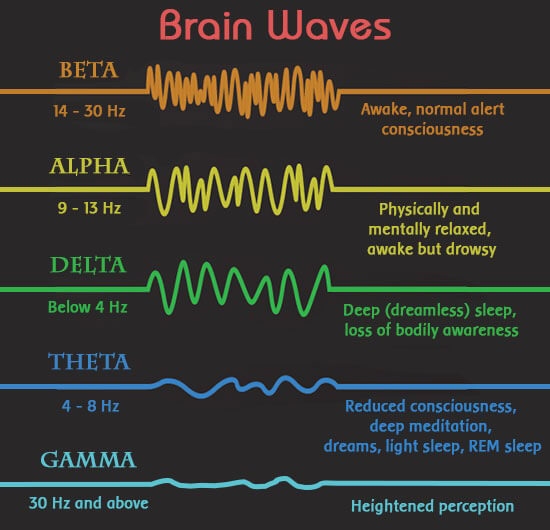Brainwaves
Types of Brainwaves
Electrical activity produced by the brain is detected in the form of waves of various frequencies. Psychological states and subjective feelings have become associated with a prominence of certain waves

Alpha Waves
Alpha waves are in the 9 to 13 Hertz range. They arise predominantly in the occipetal lobe and are associated with wakeful relaxation with closed eyes as in mindful meditation.
Beta Waves
Beta waves range from 13 to 36 Hz. They dominate the normal state of consciousness when awake and attention is directed to cognitive tasks and the outside world. Beta is a fast activity when one is alert attentive and engaged in decision making. High beta waves, above 18Hz can be associated with over arousal and anxiety.
Delta waves
Delta waves at less than 4 Hz are seen in a state of deep sleep. They are of high amplitude and very slow.
Theta waves
Theta waves range from 4 to 8 Hz and are seen when a person is drowsy , in the early stages of falling asleep, when inattentive and not concentrating. They arise in an area of the brain called the hippocampus and may be important for processing information and creating memories.
Gamma Waves
Gamma waves are are a fast wave of low amplitude and a frequency of over 30 Hz . It is associated with cognitive function, thinking, focused learning and information processing and perception.
Sensory Motor Rhythm
SMR at 12 to 15Hz is associated with a calm attentive state with reduced or silent motor activity. People with anxiety, learning difficulty, attention deficit and autism benefit from learning to increase SMR waves using neurofeedback. Sporting and musical performance has also been found to be enhanced by SMR training.